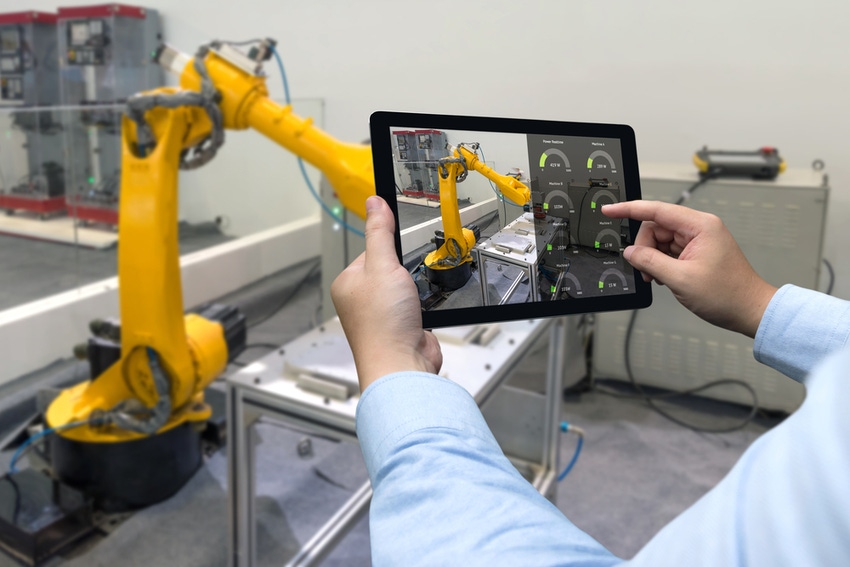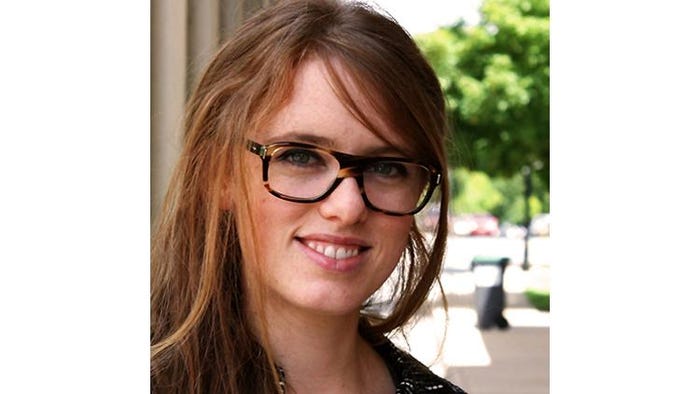How the 4th Industrial Revolution will impact packaging, part 2
October 4, 2017

Companies wishing to thrive in the Fourth Industrial Revolution should adapt their packaging systems and strategies to today’s changing circumstances.
In “How the 4th Industrial Revolution will impact packaging, part 1,” we explain how production systems are changing as consumer consumption trends shift. Because packaging touches all products, packaging will also fundamentally change.
Here are seven ideas on how you can adjust to what might well be the new normal.
1. Reconsider the context and friction of your packaging.
As packaging designers reconsider their product/packaging system in the Fourth Industrial Revolution, it will be critical to analyze the evolving context and friction of packaging. In this sense, the context of packaging refers to the situation the packaging finds itself in throughout its life.
One example of how the context of packaging is changing is how people are dissembling a shipping carton or pouch in their living room instead of taking only the primary packaging home from the store. One should ask questions like, how do packaging needs change if they don’t need to always be scanned as individual units at a checkout and then be brought home in the trunk?
In turn, the friction of your packaging could refer to the burdens (could be clerical or emotional burdens) that your packaging puts on the consumer or the fulfilment process. For example, how does the friction of unpacking a product impact a consumer’s impression of your brand if the corrugate that used to be invisible, baled up back of house at their local store, is now quite visible to the consumer, needing to be broken down and stuffed into an overflowing curbside recycling bin? What if you’re placing unnecessary friction on the consumer by over-packaging because you’re paranoid about damage, and it ends up damaging your brand equity instead?
For these reasons, one consideration the consumer packaged goods (CPG) industry should think seriously about―for long-term brand equity―is investing in curbside recycling infrastructure. If our voice assistant is going to bring our favorite shampoo right to our doorstep in a matter of hours, but we don’t have a smart recycling bin connected to a crazy underground waste network that turns it into another shampoo package, have we really reached the future, or are we creating debt? Non-recoverable packaging, packaging that isn’t sustainably sourced or excess packaging will all look painfully old-fashioned alongside things like artificial intelligence and self-driving cars.
2. Note how Amazon is disrupting the new context and friction of packaging.
Amazon is somewhat radical because it is prominently focusing on tackling what it deems the new “branding shift that is driving a different first moment of truth for customers.” By zeroing in on how people are perceiving and experiencing packaging through ecommerce, Amazon is in many ways facilitating a new era of packaging sustainability. That’s because it’s viewing packaging sustainability more through the eyes of the people, and less through the eyes of the business.
Probably as a direct result of Amazon’s self-identified “obsession” with the customer (which it believes is much different than being competition-focused, technology-focused or business model-focused), it has created the Frustration-Free Packaging certification. This certification notably requires all packaging materials must be curbside recyclable and designed to reduce waste.
While many brands look to sustainable packaging from the outlook of helping the business save money (for example, by using less materials) or to manage risk (such as moving away from finite materials in a changing climate), Amazon is looking to sustainable packaging so that consumers don’t personally experience frustration. This shift in perspective conveys an implicit understanding of the changing context and friction of packaging. It is also a refreshing example of a company taking responsibility for its own packaging by giving consumers the benefit of the doubt, and removing a burden from their shoulders that was arguably not even theirs to begin with.
3. Embrace collaboration.
Another way to thrive in the Fourth Industrial Revolution is by embracing collaboration, which improves connectivity and learning. You can respond faster to change when you’re not in a bubble―and you’re exposed to more helpful information and perspectives, too. Locking yourself away at your headquarters and guarding every aspect of your business like you’re Willy Wonka―that’s not very 2017.
Look to NGOs (non-governmental organizations) to cut through the noise in packaging sustainability in these evolving circumstances, such as the Sustainable Packaging Coalition. The supply chain is rife with various sustainability claims, and many of those claims in emerging sales channels are misleading. Instead of taking each supplier at its word about the recyclability of packaging, brands could collaborate with How2Recycle to get impartial information about their packaging that they can trust.
Companies can also collaborate with each other along the supply chain to unlock new opportunities. For example, Amazon collaborates with brands to optimize packaging design for ecommerce by being transparent across product portfolios about packaging performance data, and by identifying key opportunity areas to drive sustainable packaging solutions.
4. Invest in data acquisition and analysis.
Big Data is part of the Fourth Industrial Revolution and it will help packaging adapt and succeed, if companies are serious about getting it and interpreting it properly.
Specifically, packaging damage data will be an essential driver as goods will be moved in such different, dynamic ways than before. Advanced analytics about the supply chain will help companies make their packaging designs more responsive and efficient, and will facilitate transparency about the sourcing and production of packaging materials.
5. Minimize distractions.
There’s a temptation when we dream about and fear an unknowable future to jump to solutions that look like they’re out of The Jetsons out of a desire to dazzle or leapfrog. Many in the packaging world tend to be drawn to the “hottest” new innovations or materials that sound more sustainable but actually may clash with our existing recovery infrastructure. For example, you may not want to slap geolocation hardware onto packaging until, and unless, you can demonstrate that it’s designed for recyclability (and not just begrudgingly tolerated by some recyclers in small quantities).
In other words, don’t just follow shiny things.
6. Equip packaging and sustainability professionals with the right skills and information.
Another variable that will contribute to the natural selection of packaging in the Fourth Industrial Revolution will be skills. Too many packaging professionals―or sustainability professionals―don’t know the fundamentals of packaging sustainability or have a starting point to begin managing tradeoffs.
Courses like the Essentials of Sustainable Packaging and attending events like SPC Advance can help, but companies should make more of an overall investment in sustainability education and talent if we hope to have workforces that understand what life-cycle assessments are and can do, and also have the ability to contextualize and interpret those assessments within the greater product, packaging and logistics systems.
Another skill that isn’t mentioned enough in sustainability is persuasion. If you’re the champion of sustainability and change within your organization and you haven’t got the people above and around you bought into what you’re trying to do, your progress will be limited in these accelerating times. Collecting, curating and interpreting the information available to you, and being able to express and share that in a way that’s meaningful and compelling, will be a true differentiator.
7. Change attitudes and the way decisions get made.
Finally, attitude is going to be key in leveraging packaging opportunities in this revolution. I’ve written before about how sustainability is change, and change is painful; but as we can learn from the natural world, there is no greater threat to survival than resistance to adaptation or inability to adapt.
Part of what this might mean for brand leaders and packaging professionals is to be genuinely open to disruption. As Jeff Bezos explained in his 2017 letter to shareholders, “If you fight [powerful trends], you’re probably fighting the future. Embrace them and you have a tailwind.” The Economist echoed this sentiment recently when it warned (actually in reference to Amazon’s “competitive rivals”): “Settle for mediocrity at [your] peril.”
Attitude is directly linked to how companies make decisions. Decision-making qualities recognized as critical to adaptation in this shifting business world are the ability to be agile and the willingness to act and take risks. In the words of Elon Musk, “If you aren’t failing, you’re aren’t innovating enough.”
I have spoken with people at companies who openly concede they won’t make their packaging more sustainable unless and until their direct national brand competitors are doing so in a way that threatens their sales. Or another company said they’d use the How2Recycle label only if one of their big retail customers literally forced them. So let there be no confusion that there are entire packaging strategies out there built only on begrudgingly following others or the threat of a stick.
While a recent poll found that a little more than a third of retail companies are investing in reconfigured fulfillment infrastructure for ecommerce within the next three to five years, “‘organizational inertia” is still the number one obstacle in companies investing in the most important factors driving their business. This reminds me of how Anna Wintour, editor-in-chief of Vogue, reflects on the growing pains she’s observed in recent years as the internet permanently altered journalism:
“One overwhelming message, particularly from Silicon Valley, is that you can’t be frightened of change. A traditional company is the most difficult to pivot and you have to be open to new ideas and not be worried about failure. I think when things are challenging and different, it’s actually also a very exciting time, because it does give you a freedom to try different things…. [Y]ou get a little insular and caught up in your own world and doing things a little bit too much the same way…. This is the problem of very long established companies…. I’ll be the first to admit that at Condé Nast we have been guilty of arrogance—we are Condé Nast, we have always done it this way. We are so busy working at being the best, being perfect, that we haven’t always been open to disruption. I hope that’s changing.”
Wintour has succeeded at maintaining the relevance and popularity of Vogue amongst significant shifts in the fashion and media industries because she recognizes that clothing is a reflection of who people are and the times we live in. As things change, she believes, so should Vogue. Similar to clothing that a person chooses to wear, packaging is a telling expression of a company’s self―that can serve as a mirror of that company’s values.
Who will you be?
“[Do you] wanna embrace your destiny, or [do you] wanna get by[?]” ―Rick Ross, “Nobody”

Kelly Cramer leads the How2Recycle program as a senior manager at Sustainable Packaging Coalition. How2Recycle is the next generation recycling label for packaging that helps people recycle more, and recycle better. Under her leadership, the How2Recycle program has grown in membership size by 82% in a little over a year and a half, and has strategically scaled its operations to successfully influence brands to change their packaging design to be more recyclable. In 2017, Cramer co-created the new Essentials of Sustainable Packaging training course, and has spoken at many events, conferences and universities such as GreenBiz, UC Berkeley Haas School of Business and the Walmart Packaging Sustainability Summit about topics ranging from sustainability trends to behavior change to why we’re all asking the wrong questions about circular economy. Cramer holds a J.D. in Environmental Law from Lewis & Clark Law School in Portland, OR, and an undergraduate degree in psychology and Spanish from the University of Tennessee.
About the Author(s)
You May Also Like


